Interjet Sukhoi Superjet planes ULTIMATE COCKPIT MOVIE
+55
Isos
dino00
RusAviaGuy
Dima
miketheterrible
Firebird
PapaDragon
Hole
LMFS
GunshipDemocracy
GarryB
Arrow
ATLASCUB
auslander
MC-21
Singular_Transform
JohninMK
marat
Austin
franco
par far
Svyatoslavich
Arctic_Fox
Walther von Oldenburg
Airman
OminousSpudd
Project Canada
Giulio
ult
Rmf
zg18
wilhelm
AlfaT8
Book.
x_54_u43
Big_Gazza
KiloGolf
RedJasmin
william.boutros
max steel
TheArmenian
Werewolf
DTA
KoTeMoRe
sepheronx
Cyberspec
ExBeobachter1987
Neutrality
flamming_python
higurashihougi
Hannibal Barca
Viktor
mutantsushi
magnumcromagnon
kvs
59 posters
Russian Civil Aviation: News #2

Austin- Posts : 7617
Points : 8014
Join date : 2010-05-08
Location : India
- Post n°651
 Re: Russian Civil Aviation: News #2
Re: Russian Civil Aviation: News #2
Amazing Video of Full Superjet Flight
Interjet Sukhoi Superjet planes ULTIMATE COCKPIT MOVIE
Interjet Sukhoi Superjet planes ULTIMATE COCKPIT MOVIE

Austin- Posts : 7617
Points : 8014
Join date : 2010-05-08
Location : India
- Post n°652
 Re: Russian Civil Aviation: News #2
Re: Russian Civil Aviation: News #2
The jubilee liner SSJ-100 made its first flight
http://tass.ru/ekonomika/4752191
More than 50% of the aircraft SSJ-100 is planned to be exported
http://tass.ru/ekonomika/4728235
The SSJ-100 can reduce fuel consumption by 3%
http://tass.ru/transport/4726038
http://tass.ru/ekonomika/4752191
More than 50% of the aircraft SSJ-100 is planned to be exported
http://tass.ru/ekonomika/4728235
The SSJ-100 can reduce fuel consumption by 3%
http://tass.ru/transport/4726038

GunshipDemocracy- Posts : 6165
Points : 6185
Join date : 2015-05-17
Location : fishin on Stalin´s Strait between Mexico and Canada
- Post n°653
 Re: Russian Civil Aviation: News #2
Re: Russian Civil Aviation: News #2
Thanks fo rnot reading my postsAustin wrote:
More than 50% of the aircraft SSJ-100 is planned to be exported
http://tass.ru/ekonomika/4728235
It would be nice to know how SSJ100/ Il-114 or MS-21 Russians will try to attract India for cooperation in manufacturing/sales.

Austin- Posts : 7617
Points : 8014
Join date : 2010-05-08
Location : India
- Post n°654
 Re: Russian Civil Aviation: News #2
Re: Russian Civil Aviation: News #2
The UAC estimates its foreign market up to 2035 in more than $ 100 billion - a report
11/25/2012 9:30:00 AM
http://militarynews.ru/story.asp?rid=1&nid=467556
1ек др
11/25/2012 9:30:00 AM
Moscow. November 25. INTERFAX-AVN - The United Aircraft Corporation intends to supply the Russian Defense Ministry with military aircraft worth $ 54 billion by 2035, and abroad - $ 117 billion, the UAC said in a quarterly report.
"The volume of deliveries of military aircraft manufactured by PJSC UAC up to 2035 in the interests of the Russian Defense Ministry is estimated at $ 54 billion. The volume of the foreign military aircraft market produced by PJSC UAC up to 2035 may reach $ 117 billion," the document says.
It notes that, as of the third quarter of 2017, the UAC ranks second in the world in terms of the number of military aircraft produced this year, second only to Lockheed Martin Corp. (USA).
The corporation was informed that by 2035 it plans to produce 2 thousand 450 military aircraft and to increase its share in the affordable market from 20% in 2015 to 40% in 2025 and to 45% by 2035.
In February, UAC President Yury Slyusar told reporters about plans for deliveries of aircraft produced by the corporation: "The supply plan for the coming years: 152 in 2017; in 2018-1949; in 2019, 203 aircraft," Slyusar said.
http://militarynews.ru/story.asp?rid=1&nid=467556
1ек др

Austin- Posts : 7617
Points : 8014
Join date : 2010-05-08
Location : India
- Post n°655
 Re: Russian Civil Aviation: News #2
Re: Russian Civil Aviation: News #2
Both interviews are very good read it in full
The sky under our control - Domestic air traffic control system - the most reliable in the world
https://rg.ru/2017/12/05/savickij-vse-sistemy-upravleniia-vozdushnym-dvizheniem-v-rf-otechestvennye.html
an interview was published with the General Director of the State Transport Leasing Company (GTRC), Sergei Khramagin. Our blog leads to its shortened part.
https://bmpd.livejournal.com/2988367.html
The sky under our control - Domestic air traffic control system - the most reliable in the world
https://rg.ru/2017/12/05/savickij-vse-sistemy-upravleniia-vozdushnym-dvizheniem-v-rf-otechestvennye.html
an interview was published with the General Director of the State Transport Leasing Company (GTRC), Sergei Khramagin. Our blog leads to its shortened part.
https://bmpd.livejournal.com/2988367.html

PapaDragon- Posts : 13463
Points : 13503
Join date : 2015-04-26
Location : Fort Evil, Serbia
- Post n°656
 Re: Russian Civil Aviation: News #2
Re: Russian Civil Aviation: News #2
'
MS-21 interior
MS-21 interior

MC-21- Posts : 45
Points : 51
Join date : 2017-10-09
Age : 53
- Post n°657
 Re: Russian Civil Aviation: News #2
Re: Russian Civil Aviation: News #2
VERY BEAUTIFUL AIRCRAFTPapaDragon wrote:'
MS-21 interior

PapaDragon- Posts : 13463
Points : 13503
Join date : 2015-04-26
Location : Fort Evil, Serbia
- Post n°658
 Re: Russian Civil Aviation: News #2
Re: Russian Civil Aviation: News #2
'
And 150th Sukhoi SuperJet is flying. 32nd this year. Happy holidays!!! 


https://sdelanounas.ru/blogs/101682/

Austin- Posts : 7617
Points : 8014
Join date : 2010-05-08
Location : India
- Post n°659
 Re: Russian Civil Aviation: News #2
Re: Russian Civil Aviation: News #2
Interview with Head of CIAM: Russia participates in creation of supersonic airplane on hydrogen fuel
http://tass.ru/opinions/interviews/4809167
On PD-35 Engine
-
Sixth Generation Engine
Electric Engine
Serial gas-turbine engines for aircraft and helicopters of small and regional aviation
http://tass.ru/opinions/interviews/4809167
On PD-35 Engine
-
Are you working on creating a high-thrust engine (PD-35) for a prospective heavy transport aircraft? When can such an engine be created?
- The new twin-circuit turbojet engine of large thrust PD-35 is intended for installation on perspective wide-body aircraft, including the Russian-Chinese CR929. It will be much more powerful than the existing D-18T engines for the largest Soviet AN-124 / AN-225 aircraft. Currently, PD-35 is in the stage of research and development (R & D). In the next six years, the necessary scientific and technical reserve will be created for the beginning of experimental design work.
- What will this engine be?
- It will actively use composite materials. The efficiency of the engine increases with the increase in the degree of the two-circuit, and in this case the fan acquires ever larger dimensions. And the weight of the fan is up to 15% of the weight of the entire engine. The fan blades PD-35, for example, have a length of about 1.1 m, the diameter of the fan at the inlet is of the order of 3 m. The use of metals in this case leads to an unacceptable increase in mass. It is proposed to produce blades made of polymer composite materials with metal overlays. And each kilogram of saving the mass of the fan leads to a reduction in the mass of the entire engine.
At the same time PD-35 can not be called the sixth-generation engine. For domestic civil engines, relatively speaking, the fifth generation is just beginning. It is likely to be "5+".
According to the PD-35 program, firstly R & D is being carried out, 18 technologies are being developed, a demonstrator engine will be created on their basis, then with a small "overlap" in time, OCD will begin.
The demonstrator PD-35 will include all the key features with the maximum capabilities: fuel efficiency, ease of manufacture, maintenance, etc. Naturally, such a "super-engine" will not go into mass production, as it turns out to be too expensive and unprofitable. When the stage of OCD begins, the tasks of developing its specific characteristics will be set, depending on the specific parameters that will need to be achieved in order for this engine to be in demand.
Now we are developing technologies and the image of the demonstrator for PD-35. To date, all technical specifications for 18 technologies have been agreed upon, they are formed by both industry and us as the leading scientific organization in the field of aircraft engine building. In the framework of R & D, their detailed development, calculations, modeling is planned, then - the production of a sample.
Sixth Generation Engine
- Do you also develop engines for the sixth generation aircraft?
- It is now considered that "engines" of the fifth generation are coming out and the development of the engines of the sixth generation is being carried out. Experimental design work (ROC) for the sixth generation will probably begin only in about ten years. By the fifth, they are now either being completed or have already been completed. For example, PD-14 is a fifth-generation civil engine - it is now completing the testing and certification process and will begin to be produced serially after a while. CIAM actively participates in its creation: we developed approaches to its design and carried out part of the design work. Now our main contribution is his engineering and certification tests. They take place on our unique experimental basis. All the nodes for the PD-14 were also tested in our country, at the CIAM Research and Test Center, located in the Moscow suburbs. Tests are carried out in high-speed flight conditions, as close as possible to real ones, on special high-altitude stands. In general, all the most complex and energy-intensive types of compulsory tests of aircraft engines are performed in Russia only in the Research Center for CIAM. Moreover, we are testing not only domestic, but also foreign power plants, for example, the French company Safran.
Among the works in this field conducted by CIAM over the last decade, it is possible to mention tests for certification of modifications of PS-90A and PS-90A1, PS-90A2 and PS-90A3, SaM146, auxiliary power units, as well as certification of foreign power plants for use on Russian planes and helicopters.
And if we talk about the sixth generation, it is only as a set of technologies, which is necessary to create such engines - that in the West, that in Russia.
- How long does it take to develop a sixth generation engine?
- In principle, the division into generations is conditional. Some technologies are already ready, some are in the process of development. Of course, we would like to see as much money as possible in science, so sooner it will be possible to create something new. But the process of cognition is regulated not only by money - it takes time and effort. There is such a thing as the S-curve, which simulates the development of various projects: first there is a rapid development of technology - a sharp jerk up, then comes the plateau - the saturation region. The turbine construction in this curve is now closer to saturation. To increase the efficiency of engines by several percent, you need to invest a lot of time and money. Certainly, there are still reserves for improvement in this area, but every additional percentage of efficiency, each new quality is given hard and expensive.
At the very beginning of this curve is the electromotive. We believe that in the next few years there will be a rapid growth of technologies related to the electrification of transport, both in the air and on the ground.
Electric Engine
"What is an electric motor?"
"While it's an electric motor and a propeller." In any case, we are talking about screw engines. On the way to creating a fully electric motor, all developed countries are now in the stage of developing a hybrid engine that has both a turbine and a generator that generates electricity. The second option - the failure of the turbine and the preservation of electricity in batteries or fuel cells. This is a longer horizon, because while kerosene is a very effective source of energy in terms of weight. When burning a small amount of kerosene, it gives the amount of energy that no battery can yet provide. But the world is actively developing ever more capacious and light batteries and fuel cells, working, for example, on hydrogen. Work is also carried out on the weight efficiency of the entire engine.
A separate problem for an electric plane is the amount of energy needed for aircraft needs and the management of its flows. There is a question of managing the outstanding heat, with which you need to do something.
In general, hybrid and electric traction is a very promising direction, one of the defining technologies for the future of aviation. Now there are many small planes in the world for one or two people, but they all can fly very short. At the stage of the demonstrator of technology and research, the flight hour is excellent, further questions begin. While in the world there is not a single electric plane that could carry passengers or cargo. They fly enthusiast pilots, because the reliability of this technology has not yet been fully resolved. There is still a long way to go.
- Do you have such demonstrators in Russia?
- We are working on them. So far, nothing but models, does not fly. A few years ago a fuel cell flew a drone. At present, we have a project to create a demonstrator of a hybrid power plant with an electric motor based on high-temperature superconductivity. There are no similar projects in the world. At the heart of our - a special conductor, cooled by liquid nitrogen, which at a temperature of minus 196 ° C has the effect of zero resistance. As a result, high efficiency is achieved and the mass and dimensions characteristics of the engine are significantly reduced. Two such engines with a capacity of 500 kW each can be equipped with a regional plane for 19 seats. At the level of the demonstrator with the pilot, we can go out in 2019. A manned plane for two places can do at least now. There would be more money, probably,
Serial gas-turbine engines for aircraft and helicopters of small and regional aviation
Let's talk about engines for small aircraft. For TVS-2-DT, created by SibNIA to replace An-2, it is planned to install TPE331 of Honeywell. Why do we have no new developments in this segment?
- The problem is not lack of new developments, they can be. These planes and their engines belong to previous generations. We need large investments in designing, testing and creating production facilities whose profitability is very low. And Western countries, unlike us, have kept their production.
Recently, a conference was held in CIAM on the topic of creating a single federal concept for the development of engine building for small and regional aviation. A working group was created that will submit proposals to the government.
Modern domestic serial gas-turbine engines for aircraft and helicopters of small and regional aviation are simply absent today. Currently, only two domestic engines are in development: the TV7-117ST-01 for the Il-114-300 and VK-800S aircraft for the remotorization of the L-410 aircraft.
Attempts are being made to start serial production of small-size engines (mainly piston engines), since they are also used on unmanned aerial vehicles. However, they need to be developed in a wide range: from 50-60 to 300-500 hp.
Another important area of research is work on a single-section experimental rotary-piston engine, on the basis of which it is possible to create a model range of aircraft engines with a power from 100 to 400 hp. This is the size of the engine for the Yak-152. But this is a demonstrator of technology. It is necessary to calculate how much the foreign engine will cost, and how much - the domestic one.
To ensure the competitiveness of domestic small-sized engines, it is necessary to create a scientific and technical base on the technologies of an electric "smart" engine. Studies on these areas are being conducted in CIAM in cooperation with the branch OKB. The implementation of technologies should provide by 2035 a reduction in specific fuel consumption by 15-20%, a reduction in mass to 30% and an increase in reliability and resource by two to three times.
One of the ways to dramatically improve the characteristics of piston engines is the use of turbocompound circuits in which the energy of exhaust gases is used to obtain the additional power used to drive the propeller or electric generator.

Austin- Posts : 7617
Points : 8014
Join date : 2010-05-08
Location : India
- Post n°660
 Re: Russian Civil Aviation: News #2
Re: Russian Civil Aviation: News #2
The Superjet100 winglet - which sukhoi engineers have apparently nicknamed "sabrelets" because of the shape



PapaDragon- Posts : 13463
Points : 13503
Join date : 2015-04-26
Location : Fort Evil, Serbia
- Post n°661
 Re: Russian Civil Aviation: News #2
Re: Russian Civil Aviation: News #2
And another one, 151 so far...
https://sdelanounas.ru/blogs/101949/
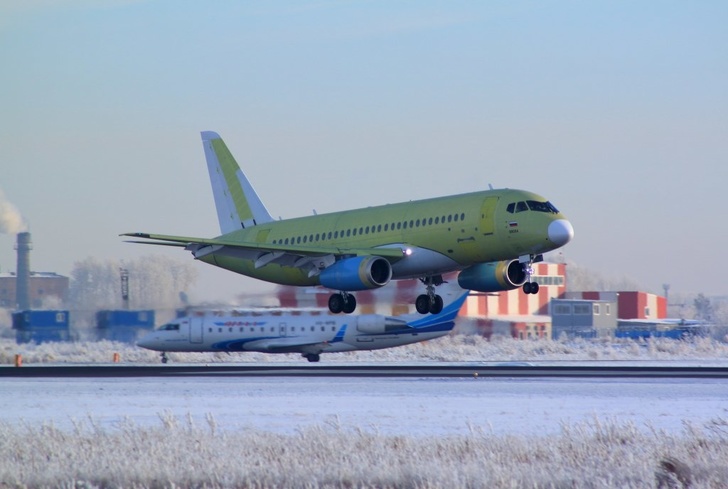

PapaDragon- Posts : 13463
Points : 13503
Join date : 2015-04-26
Location : Fort Evil, Serbia
- Post n°662
 Re: Russian Civil Aviation: News #2
Re: Russian Civil Aviation: News #2
First test flight of SSJ-100 version with winglets completed
https://sdelanounas.ru/blogs/101983/
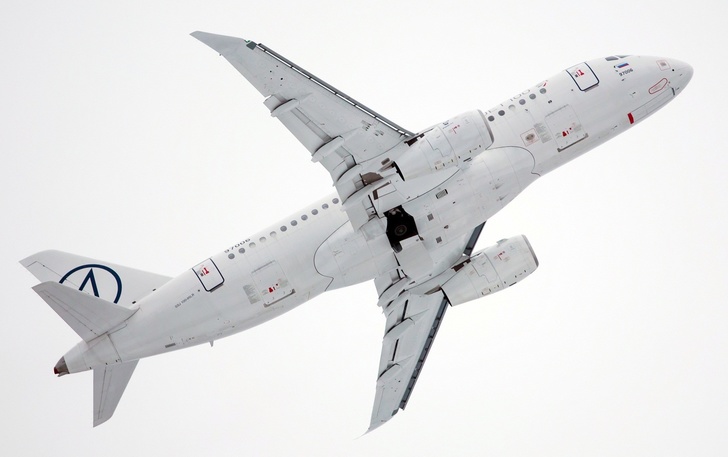
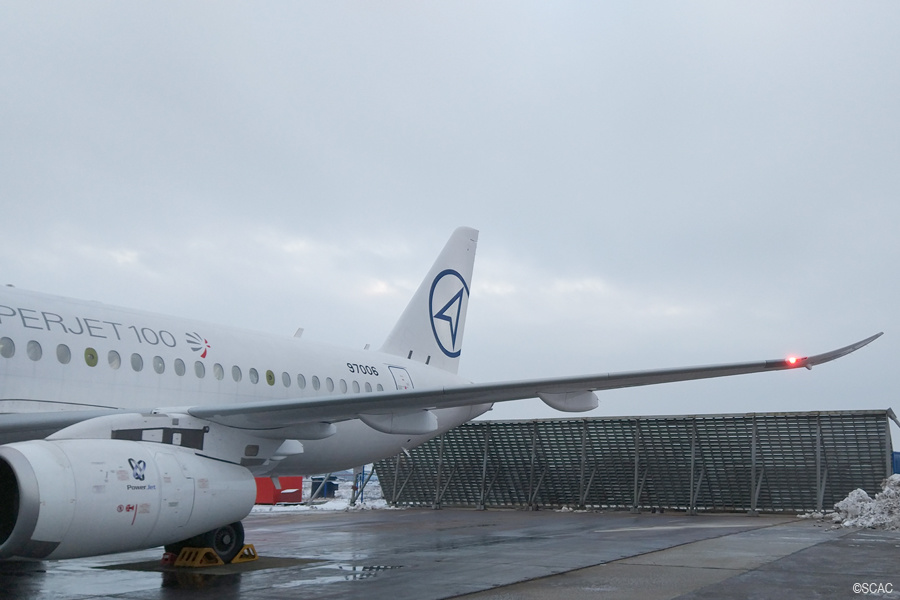
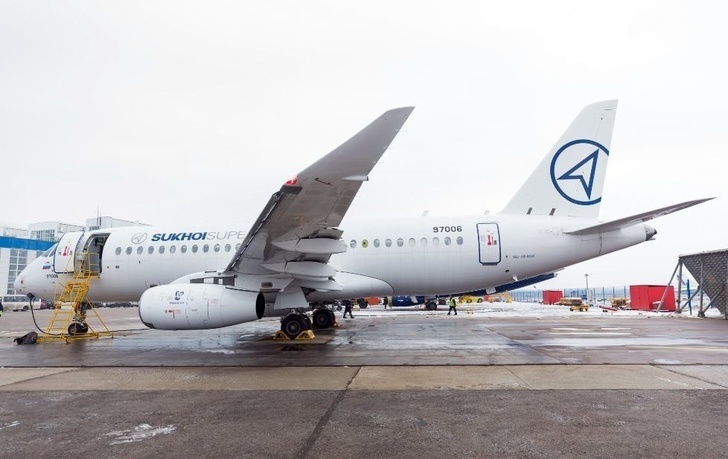
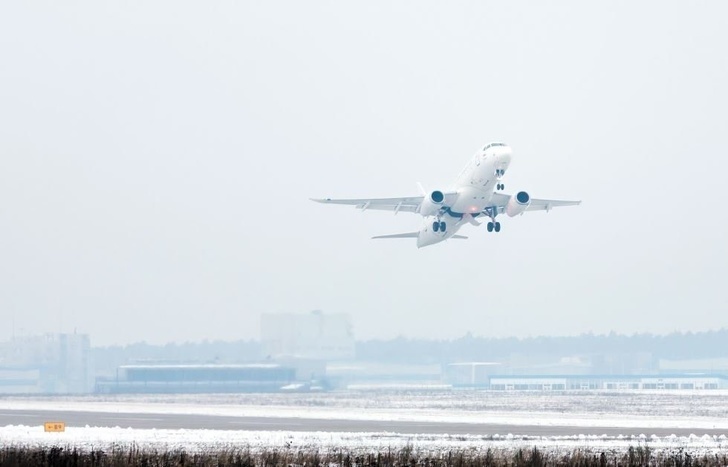
https://fotografersha.livejournal.com/951063.html

Austin- Posts : 7617
Points : 8014
Join date : 2010-05-08
Location : India
- Post n°663
 Re: Russian Civil Aviation: News #2
Re: Russian Civil Aviation: News #2
The first Russian aircraft engine of great traction will be certified in 2025 - the developer
12/21/2012 2:17:23 PM
*** It is needed by the Russian Air Force and for installation on long-range long-range airliners
12/21/2012 2:17:23 PM
*** It is needed by the Russian Air Force and for installation on long-range long-range airliners
http://militarynews.ru/story.asp?rid=1&nid=469736
Moscow. 21 December. INTERFAX-AVN - The aircraft engine of the order of 35 tons, which is being developed in Russia, is planned to be certified in 2025, Interfax-AVN was told on Thursday by the press service of the company "ODK-Aviadvigatel".
"In 2025 it is planned to certify in Russia the first aircraft engine of great traction PD-35, which will be built entirely of domestic materials and by domestic technology," the press service said.
As reported, in 2016 a decision was made to develop a "heavy" engine with a thrust of 35 tons. It is necessary to achieve fuel efficiency on long-haul airliners and powerful military transport aircraft. September 23 this year, Russian President Vladimir Putin said that work on the regional IL-114 and the PD-35 engine will be financed not only in 2018, but also until 2020 inclusive
"We agree in this way: in an emergency manner, so to say, we financed these expenses from Rosneftegaz until 2018 inclusively, and 2019-2020 should be financed from the budget, and I will agree with the Finance Ministry on this," Putin said. During the meeting with the head of the Ministry of Industry and Trade Denis Manturov.
The head of state called this work one of the priorities. "We need a regional plane of our own, otherwise we will always buy everything abroad in this segment, but we need a powerful engine, PD-35 is needed." Many projects in aviation are connected with this engine, "Putin said.
In the "ODK-Aviadvigatel" note that "on the basis of the engine PD-35 is planned to further create a family of aircraft engines of various traction up to thrust at take-off to 50 tons."
According to the company, "the total cost of the PD-35 program is estimated at 180 billion rubles." Unlike the previous programs for the creation of aircraft engines, for the first time this amount includes the cost of capital construction. "
"The cost of capital construction is necessary in connection with the novelty of the engine design.During the creation of the aircraft engine PD-14, it was possible to manage the modernization of the existing production and testing facilities.But for the creation and production of the PD-35 family, it is necessary to build a practically new production facility, as well as a new testing base" , - the press service informs.
It is also believed that "the creation of a new production and testing base for the PD-35 engine will be a new growth point not only for the Perm bush of aircraft engines, but for the entire industry as a whole."
Earlier it was reported that the Russian military are interested in the implementation of the program for the creation of the PD-35. Commander of the Military Transport Aviation Vladimir Benediktov at the MAKS-2017 air show noted that the Russian army is armed with "superheavy, strategic aircraft that need a more powerful engine." "Therefore, in the future, we are very much looking forward to the new PD-35 with increased traction, suitable for such vehicles," said the military commander
Also, a two-circuit turbojet engine of ultra-large thrust PD-35 is planned to be installed on the perspective Chinese-Russian wide-body long-range aircraft, which now has the working designation C929.
It was reported that within the framework of the work on PD-35, it is intended to scale the gas generator from PD-14 for the medium-range perspective aircraft MS-21 designed and manufactured by Irkut Corporation.

kvs- Posts : 15839
Points : 15974
Join date : 2014-09-11
Location : Turdope's Kanada
- Post n°664
 Re: Russian Civil Aviation: News #2
Re: Russian Civil Aviation: News #2
PD-35 in seven years. That is a very good timeline. I guess the China-Russia wide-body will be ready by then too.

GarryB- Posts : 40487
Points : 40987
Join date : 2010-03-30
Location : New Zealand
- Post n°665
 Re: Russian Civil Aviation: News #2
Re: Russian Civil Aviation: News #2
Boy... up to 50 tons thrust.... that is double the afterburning power of the engines currently in the Tu-160 and Tu-22M3... so the former could become a twin jet and the latter a single jet engined aircraft... assuming they have ABs of course.... the PD-35 would most likely be a subsonic high bypass engine so the easiest way to get it to 50 tons thrust would be to make it a medium bypass engine and put an AB on it.
The PD-35 will be good for a new range of heavy transports too.
The PD-35 will be good for a new range of heavy transports too.

Austin- Posts : 7617
Points : 8014
Join date : 2010-05-08
Location : India
- Post n°666
 Re: Russian Civil Aviation: News #2
Re: Russian Civil Aviation: News #2
HEAD OF UZGA: 2017 BECAME A REVOLUTIONARY ONE FOR THE PLANT THANKS TO L-410, DA-42T AND PS-90-GP2
https://www.aviaport.ru/digest/2017/12/28/511573.html
https://www.aviaport.ru/digest/2017/12/28/511573.html

Cyberspec- Posts : 2904
Points : 3057
Join date : 2011-08-08
Location : Terra Australis
- Post n°667
 Re: Russian Civil Aviation: News #2
Re: Russian Civil Aviation: News #2
It seems there is Russian involvement with the European ENOVAL project
ENOVAL - Ultra High Bypass Ratio Aero Engines
http://www.enoval.eu/
ENOVAL - Ultra High Bypass Ratio Aero Engines
http://www.enoval.eu/
Russia is working on an innovative project highly economical, low-noise aircraft engine of the new generation....
The prospective project work experts of the Central Aviation Motors. PI Baranova (TsIAM). The development was named ENOVAL. It should be noted that this project, Russian engineers are working together with the European partners. Company representatives noted earlier that the new engine is to appear as early as 2025. By this time, experts hope to carry out all necessary studies and tests.
The new engine should have a low noise level and high performance in terms of efficiency. Head of the department of CIAM VI Mileshina previously reported that the new development goes aerodynamic and acoustic research using domestic birotativ fan. And this fan has been designed in two versions. European engineers decided to create a "engine", which eventually turned out to be worse than the Russian product.
The specialist also said that further tests will be carried out in the first half of 2018 in the research center operating in CIAM. Russia has advanced equipment, fully meets the requirements of the construction of such a complex technological and in terms of the design development. Such joint projects can significantly raise the overall level of development of the Russian engine. In addition, the scientific expertise will allow the Russian Federation in the future to create a domestic power plants for the whole range of civil aircraft....
Источник: https://politexpert.net/83939-aviadvigateli-novogo-pokoleniya-perspektivy-rossiiskikh-razrabotok#relap

Cyberspec- Posts : 2904
Points : 3057
Join date : 2011-08-08
Location : Terra Australis
- Post n°668
 Re: Russian Civil Aviation: News #2
Re: Russian Civil Aviation: News #2
Another pic of the SSJ-100 with winglets...apparently they're considering using the PD-7 engine (based on the PD-14) in case there is further complications with their "friends and partners"
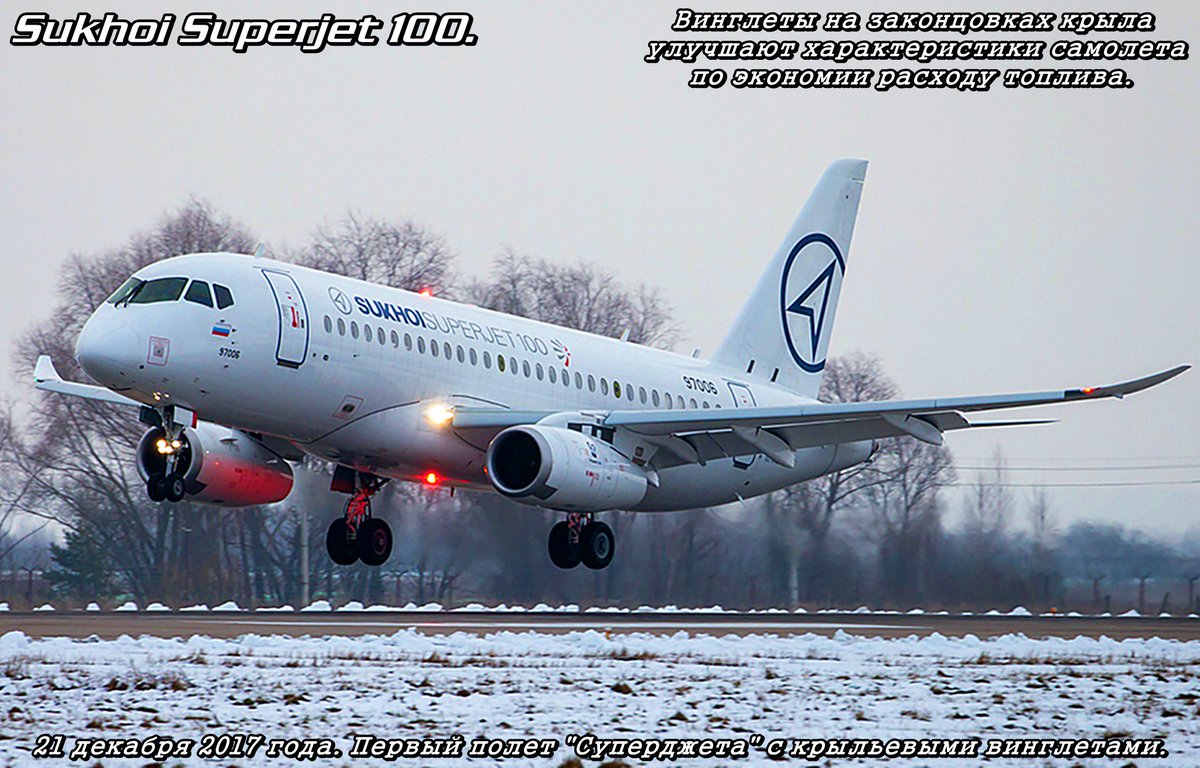


Austin- Posts : 7617
Points : 8014
Join date : 2010-05-08
Location : India
- Post n°669
 Re: Russian Civil Aviation: News #2
Re: Russian Civil Aviation: News #2
The L-410NG aircraft received European and American certificates
https://topwar.ru/133657-samolet-l-410ng-poluchil-evropeyskiy-i-amerikanskiy-sertifikaty.html
https://topwar.ru/133657-samolet-l-410ng-poluchil-evropeyskiy-i-amerikanskiy-sertifikaty.html
Director of Aircraft Industries for sales in Russia and CIS, Sergei Martynov said that in 2018 the company plans to manufacture the first serial L-410NG.
We are negotiating with potential customers. Probably, the first L-410NG will be delivered to one of them in late 2018 - early 2019, and it is possible that to Russia,
said the resource Martynov.
It is reported that "in 2017, the Czech aircraft manufacturer built and delivered 12 aircraft to the customers, but it is obvious that gradually with the production of L-410UVP-E20 at the Ural Civil Aviation Plant, the output of these cars in the Czech Republic will decrease."
The project of deep modernization of the 19-turboprop L-410UVP-E20 aircraft was launched in 2010. The first flight of the L-410NG was made in Kunovice in July 2015.
According to the resource, the main differences of the L-410NG from the L-410UVP-E20 are: "The use of H85-200 engines with a power of 850 hp. (instead of H80-200, 800 hp), a modernized wing with additional fuel tanks, double luggage space, etc. "

Austin- Posts : 7617
Points : 8014
Join date : 2010-05-08
Location : India
- Post n°670
 Re: Russian Civil Aviation: News #2
Re: Russian Civil Aviation: News #2
Contract documents reveal plans for Russia's new widebody engine
A newly-signed contract discloses key details of Russia’s design goals for the country’s first high-bypass gas turbine engine in the 75,000lb-thrust power class launched on 19 January to support the CRAIC CR929 widebody, Ilyushin Il-96-400 and several military projects.
A newly-signed contract discloses key details of Russia’s design goals for the country’s first high-bypass gas turbine engine in the 75,000lb-thrust power class launched on 19 January to support the CRAIC CR929 widebody, Ilyushin Il-96-400 and several military projects.
The $1.13 billion (₽64.3 billion) contract awarded by the Russian government on 19 January calls on United Engine-Aviadvigatel to develop a demonstrator engine named the PD-35-1 by 2023 featuring several state-of-the-art technologies, including wide-chord composite fan blades and composite fan case, ceramic matrix composites and advanced cooling systems.
The PD-35-1 also will be designed with a compressor pressure ratio measuring 23:1, the contract documents posted on the Russian government’s procurement agency says. That falls a step below the 27:1 ratio planned for the high-pressure compressor section of the GE Aviation GE9X engine now in development testing for the Boeing 777X.
But the documents still reveal a plan for Russian industry to make dramatic progress over the next decade. Building on the advanced metallics now in testing in the 28,000lb-thrust PD-14 turbofan, the PD-35-1 will drive Russia to introduce composite materials pioneered by GE over the last 15 years. The Aviadvigatel PD-14 is Russia’s homegrown alternative to the Pratt & Whitney PW1400G on the Irkut MC-21 narrowbody.
In a statement posted on his Facebook page, Russia’s deputy prime minister for defence and space industries Dmitry Rogozin notes that the Soviet Union never produced a turbofan engine over 70,000lb-thrust and the PD-35-1 will become the first in the region’s history.
“We really need it,” he says.
Russia and China have teamed up to develop the CR929 under the CRAIC joint venture between Comac and United Aircraft. CRAIC is expected to select an engine made by GE or R-R to introduce the CR929 into commercial service by the end of the next decade. Separately, China and Russia each plan to develop indigenously-sourced alternatives to the Western powerplants for the CR929. The PD-35-1 also would be used to power several Russian air force development projects, including the Il-476 airlifter, Il-478 tanker and a long-term effort to replace the Antonov An-124.
Mimicking the structural configuration of the Boeing 787’s GEnx-1B engines, the PD-35-1 engine will be designed with wide-chord composite fan blades and a composite, the contract documents show. The documents don’t specify if Russian industry plans to use a similar process as GE’s 3D woven composite materials.
The turbine of the PD-35-1 will be exposed to temperatures as high as 1,450°C (2,640°F), exceeding the melting point of most advanced metal alloys. To help the turbine survive, the contract documents say Aviadvigatel must integrate exotic new materials and advanced cooling systems. Two types of ceramic matrix composites (CMCs) – silicon carbide-silicon carbide (SiC-SiC) and carbon-silicon carbide (C-SiC) will be used in the PD-35-1 demonstrator engine, the contract documents say. GE pioneered the use of CMCs in the Leap-1 series of engines that it produces with Safran under the CFM International joint venture.

Austin- Posts : 7617
Points : 8014
Join date : 2010-05-08
Location : India
- Post n°671
 Re: Russian Civil Aviation: News #2
Re: Russian Civil Aviation: News #2
To any one who understands Engine Technology , is this a downside of PD-35 its compression ratio ?
The PD-35-1 also will be designed with a compressor pressure ratio measuring 23:1, the contract documents posted on the Russian government’s procurement agency says. That falls a step below the 27:1 ratio planned for the high-pressure compressor section of the GE Aviation GE9X engine now in development testing for the Boeing 777X.
The PD-35-1 also will be designed with a compressor pressure ratio measuring 23:1, the contract documents posted on the Russian government’s procurement agency says. That falls a step below the 27:1 ratio planned for the high-pressure compressor section of the GE Aviation GE9X engine now in development testing for the Boeing 777X.

kvs- Posts : 15839
Points : 15974
Join date : 2014-09-11
Location : Turdope's Kanada
- Post n°672
 Re: Russian Civil Aviation: News #2
Re: Russian Civil Aviation: News #2
Austin wrote:To any one who understands Engine Technology , is this a downside of PD-35 its compression ratio ?
The PD-35-1 also will be designed with a compressor pressure ratio measuring 23:1, the contract documents posted on the Russian government’s procurement agency says. That falls a step below the 27:1 ratio planned for the high-pressure compressor section of the GE Aviation GE9X engine now in development testing for the Boeing 777X.
Heat engine efficiency is determined by temperature gradients. It is difficult to infer from the pressure what the temperature of
operation is of the PD-35 vs. GE9X.
Also, the article you posted is full of propaganda shit. The "GE did it first" BS is thick and rich. It's equivalent to bleating about
"we used metal to make our engines first". The real sophistication is in the type of ceramics and composites that will be used and
nobody with any clue can fob Russia off in this regard.

Austin- Posts : 7617
Points : 8014
Join date : 2010-05-08
Location : India
- Post n°673
 Re: Russian Civil Aviation: News #2
Re: Russian Civil Aviation: News #2
kvs wrote:Heat engine efficiency is determined by temperature gradients. It is difficult to infer from the pressure what the temperature of
operation is of the PD-35 vs. GE9X.
Ok , what about this
the PD-35-1 engine will be designed with wide-chord composite fan blades and a composite, the contract documents show. The documents don’t specify if Russian industry plans to use a similar process as GE’s 3D woven composite materials.
The turbine of the PD-35-1 will be exposed to temperatures as high as 1,450°C (2,640°F), exceeding the melting point of most advanced metal alloys. To help the turbine survive, the contract documents say Aviadvigatel must integrate exotic new materials and advanced cooling systems. Two types of ceramic matrix composites (CMCs) – silicon carbide-silicon carbide (SiC-SiC) and carbon-silicon carbide (C-SiC) will be used in the PD-35-1 demonstrator engine, the contract documents say.
I am no engine expert but if they can build a competitive engine in PD-14 versus LEAP and PW1400 GTF , I think they wont settle for any thing less building an equivalent engine of western peers

GunshipDemocracy- Posts : 6165
Points : 6185
Join date : 2015-05-17
Location : fishin on Stalin´s Strait between Mexico and Canada
- Post n°674
 Re: Russian Civil Aviation: News #2
Re: Russian Civil Aviation: News #2
Aeroflot signed a contract with Rostech for the lease of 50 MC-21 aircraft
https://www.aeroflot.ru/ru-ru/news/60720
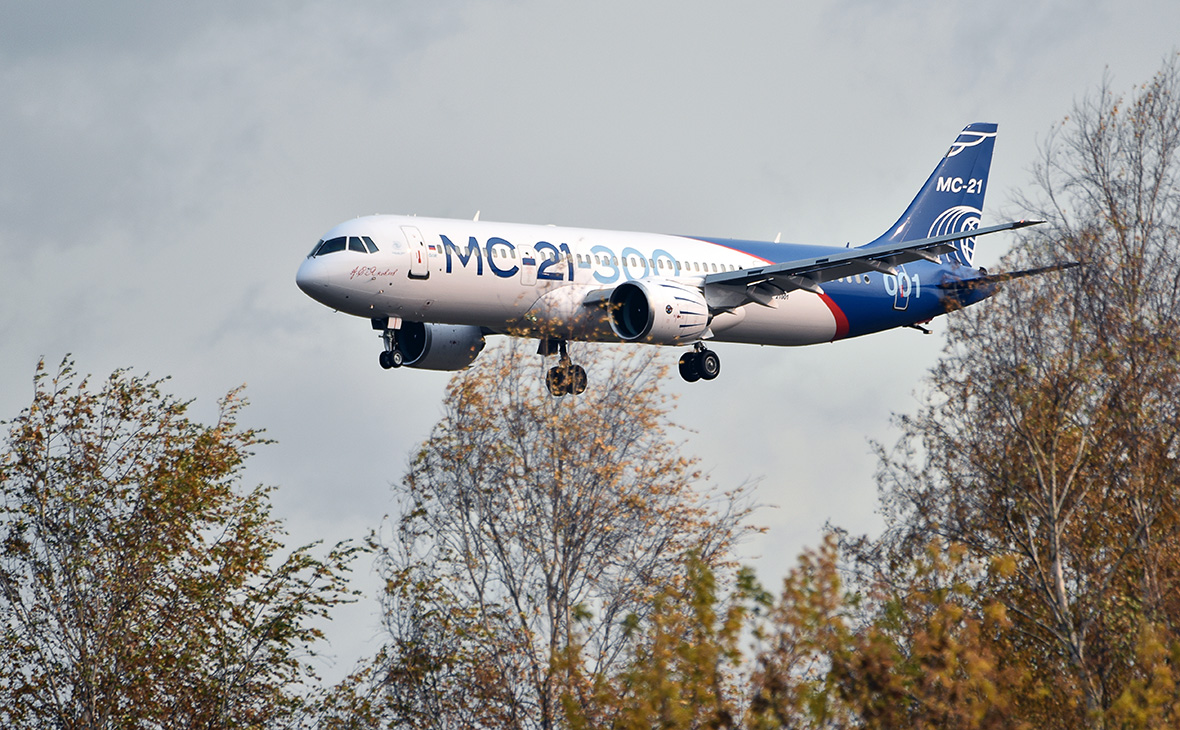
https://www.aeroflot.ru/ru-ru/news/60720
February 1, 2018, Moscow. - Aeroflot will become the largest operator of the newest Russian main-line aircraft MS-21. The historic contract for the delivery of 50 new-generation passenger aircraft will be signed today between PJSC Aeroflot and Rostekh State Corporation.
Under a firm contract, Rostekh's subsidiary, the leasing company Aviakapital-Service, will provide the airline with operational leasing of 50 MC-21-300 vehicles. Thus, Aeroflot will become Russia's largest tenant of the newest domestic airliners. The amount of leasing payments and maintenance reserves will be more than $ 5 billion.
In the layout for Aeroflot, the liner is designed to carry 169 passengers (16 business-class seats and 153-economic). At the first stage, the contract provides for the supply of aircraft with a foreign engine. Starting with the 26th aircraft, the airline has an option to receive airliners with the new Russian PD-14 engines, which are now being certified.
The first aircraft should be delivered in the first quarter of 2020, the completion of shipments is expected in 2026. The lease term of each aircraft is 12 years, with the possibility of prolongation for 2 years no more than 3 times. Aeroflot plans active commercial operation of the aircraft both on domestic and international routes.
"The deal confirms that the Russian civil aviation industry is recovering its lost positions in the past and ranks in line with the world's leading manufacturers. MS-21 is a truly breakthrough result for the aviation industry. The aircraft uses advanced materials and systems of the latest generation, created by leading domestic companies. In particular, Rostekh produces for MS-21 titanium and composite parts, on-board electronics, chassis components, other systems, as well as its "heart" - PD-14 engine. We are confident that this engine will be selected by Aeroflot as the main power unit for the MS-21, "said Rostekh CEO Sergei Chemezov .
"The signing of a firm contract for 50 MC-21 cars is a historic milestone not only for our companies, but for the whole country," said Vitaly Saveliev, General Director of PJSC Aeroflot.. - Russia has created the first trunk plane of the new generation. This is evidence of Russia's return to the status of a great aviation power. Signed that the signing of a firm contract between Aeroflot and Rostegh coincided with another, no less significant for our country: Aeroflot officially returned to the global aviation elite - entered the top-20 largest air carriers of the world. Today, including taking into account the geopolitical situation, we see that for the development of success, we need a competitive domestic technology - high-quality and economical. Therefore, it is extremely important for us to cooperate with Rostech, our major partner and shareholder. "
MS-21-300 is a medium-haul narrow-bodied aircraft created by the Irkut Corporation (part of the United Aircraft Corporation, UAC) in cooperation with the country's industrial companies. In the production of the aircraft, Rostecha holding companies - VSMPO-AVISMA, DCC, Technodynamics, KRET, RT-Khimkompozit - are actively involved.
The liner is equipped with an innovative ergonomic cabin and has improved performance thanks to innovative design solutions. For the first time in the world, a wing made of polymer composite materials was used in such an aircraft. The share of composites in the design of MC-21 exceeds 30%, which allows to significantly increase the payload of the aircraft.
The airliner has the largest in the class of narrow-body aircraft with a fuselage diameter (4.06 m) - this solution provides passengers with a qualitatively new level of comfort. In particular, the cabin of the aircraft has an increased passage between the seats and rotary luggage shelves of increased capacity. Specially on the order of Aeroflot on the liners, it is planned to install Wi-Fi equipment that provides passengers with access to the Internet.


PapaDragon- Posts : 13463
Points : 13503
Join date : 2015-04-26
Location : Fort Evil, Serbia
- Post n°675
 Re: Russian Civil Aviation: News #2
Re: Russian Civil Aviation: News #2
Work started on development of SSJ-75
https://sdelanounas.ru/blogs/103607/


 kvs
kvs